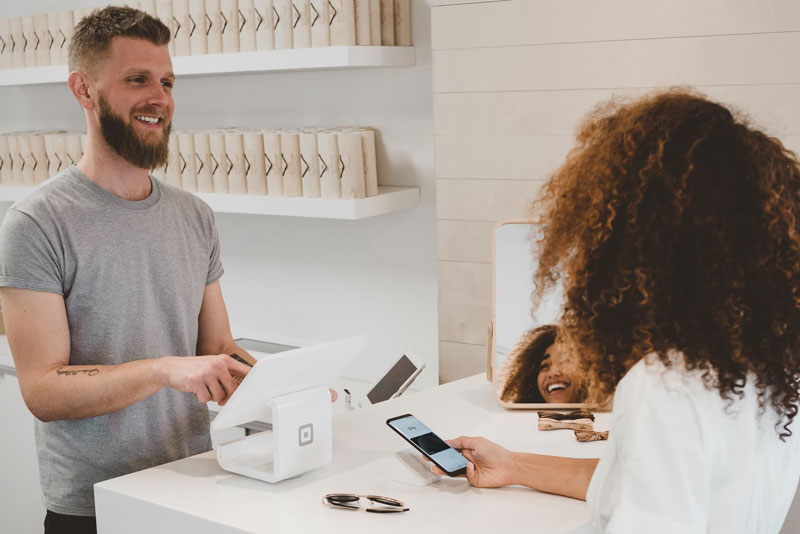
Featured Image: iStock/putilich
If there is one magic ingredient that makes all kinds of businesses all kinds of better, it’s consumer insights. Consumer insights refer to patterns of behavior, thoughts, and emotions that outline their purchasing decisions and overall engagement with your brand.
Operating a business without consumer insights is a dangerous sport. It’s a lot of shooting in the dark, hoping something would stick.
But with these insights working alongside you, you can create strategies that are based on authentic data. You already know what isn’t working, what needs to be corrected, and what needs to be amplified. Consumer insights improve the overall performance of the brand.
We are going to talk about 5 super-easy, everyday methods you can utilize to know what your customers are thinking or talking about.
Every time your customers conclude a purchase, a support conversation, or any other kind of interaction with you, ask them to fill out a brief survey. You can ask them what they thought of the entire process if the help they received resolved their issue, whether they have any suggestions for improvement, or how would they like to recommend the business to a friend.

Simple, to-the-point, brief surveys like this help businesses keep their hand on the pulse. These timely surveys help put out fires before they have a chance to spread.
To make your insights deeper and more comprehensive, you can also carry out regular survey campaigns for more insightful questions and use all that data to optimize your product and service functionality and quality.
Most people love leaving reviews – whether good or bad. It gives them a chance to share their side of the story. Many do it to help others make better buying decisions. As a business, you can use these reviews for your brand in more ways than one.

In addition to using them as consumer insight tools, for example, you can use them in your PPC and social media ads, for product design and development, and your sales deck, too. Reviews like google will help you pick a reliable company, Learn more on how google reviews and customer feedback are helpful like for example in searching for a car shipping company – Car Shipping Hawaii.
It is a passive CI collection strategy and uses services like Google’s Web Analytics to see how users are engaging with your website. These user tracking programs allow you to micro analyze your users’ interaction with each page of your site. You can also use these analytics tools for your social media, or implement a social proof plugin using the user data you’ve collected to enhance user interaction and sales.

You can check the pages they are visiting the most, sections of the site with the highest bounce rate, and pages they’re spending most of their time at. Compared to reviews and surveys, this data is more objective and precise.
Social listening refers to tools and methods you employ to keep a track of all the mentions and conversations that people are having about your brand on social media. Tracking the keywords or phrases that people are using the most to talk about you is a great way to understand how they perceive you and feel about you. Listening to these mentions can also clue you into what your audience is saying about your competitors.

You can use all of these real-time data to draw insights that can inform your modern marketing methods and CX strategy.
Analyzing customer service interactions helps you get the real picture of what you are doing right and what you could be doing better. CI that comes directly from service and support interactions not only helps you improve your services but the overall brand, too.

You can learn what features you could implement next, the areas of the customer journey that proved the least frictionless, and where they found the most gap for growth.
The importance of the testing phase for any new launch cannot be overstated. To ensure that the products we are banking on meet the needs of users, user testing is incredibly important. Inviting a targeted group of users to test your beta versions allows you to iron out any wrinkles you find in the program before you roll out the final thing.
When you are tracking behavioral or usability data for ecommerce website development, it can lead you to issues that may not be too prominent at the moment. Identifying these bugs and helping eCommerce website developers fix them before they become bigger issues is what lies at the heart of CI efficiency.
During the testing phase, consumer insights can help you create customer journey maps that are most productive and effective, with the least amount of friction or pain going from one step to the next. These insights lead you to the data about who your target demographic is, where they are located, what actions they are taking or want to take with your product/service, and how they are engaging with the touchpoints you have created for your brand.
The pandemic has been a study of how people have changed and the various new ways they are now choosing to engage with their regular products/services.
Modern businesses need to be thinking quickly on their feet. Business models that are more agile or have more room for pivots are the only ones that can survive in the commercial landscape as fluctuating as the current one. Consumer insights can help you there. You can find actionable data to make necessary changes to your existing product/service portfolio, introduce new features, and offer more flexibility to the consumers.
While optimizing your current list of products and services is a great thing to do, consumer insights can direct us to opportunities to creatively answer customer needs. Listening to what your customers have to say can give you ideas about new things you could offer them, plus, use their feedback to enrich and improve the products that you currently developing.
Consumer insights answer some very important questions about what your audience is doing and feeling – but the most important of them is not what, but where.
‘Where are your customers hanging out?’
When you know that, you can create offers that will appeal to them the most and also offer it to them at places where they are more likely to be.
Customers bring a lot of emotional and cognitive baggage to their interactions with your brand. What is happening around the world, and how equipped most of your consumers are to deal with those changes, matters a lot. Using CI can help you revamp your brand message to be more sensitive and mindful of changing customer beliefs. When a brand fails to do so, it can be all sorts of catastrophic. Harvard University, for example, despite having a $40 billion endowment, chose to take SBA loan money that was directed more towards smaller businesses that were struggling due to Covid-19. It turned into a PR disaster, even though the University tried to backtrack – the damage was done.
If they had been more attuned to consumer sentiment during such a sensitive period of human history, their brand standing wouldn’t have suffered such a major blow.
Social listening tools are a great way to learn the words, phrases, and slang your audience use to talk about you. Not only that, but you can also be privy to the subtleties of how modern language is evolving and the contextual background that you should be mindful of.
With these insights, you can truly mirror your audience. Use words and phrases that they relate with the most, and see their descriptions of you align with the brand message you are trying to send. If you find mentions that are not entirely positive, you can then take steps to correct your course and ensure your people always talk about you in the most loving terms possible.
It almost goes without mention but for the sake of putting it all out there, I have to say it. ‘Personalized marketing is the only way of marketing that you should bother with’.
There is a ton of research and data available to show you that people love it when you call them by their name, remember their preferences, and recommend things they are more likely to find interesting. Consumer insights are incredible piles of data that help you achieve this level of telepathy. Use them as much as you can to make your marketing as customized to each of your customers as possible. This especially goes for newer brands with smaller demographics where the pool is small enough to make individual attention possible.
Another that’s a given with useful application of consumer insights is improved customer service. Almost always, this is the first area that businesses tend to go to whenever they stumble upon insightful customer data. ‘How to make our services better?’
Using insightful customer behavioral data makes your customer service and support that much more effective. It can even become a tool to identify and diagnose problems before they get any bigger. Train your employees and equip them with the necessary tools to bring their data and insights to you. You can then use this learning to make your responses more empathic, timely, and solution-oriented so the complaints do not recur.
Combined, all these efforts bring about more permanent and creative solutions to customer pain points, ultimately leading to a highly engaging and positive customer experience. Spotify gained huge brand loyalty when it started using consumer insights for its ‘how did the year go’ marketing. Perhaps your brand cannot afford to rent those choice billboards, yet there’s no reason you can’t look at your data and learn a thing or two about your audience to give them a better time when they visit your brand.
Kelvin Stiles is a tech enthusiast and works as a marketing consultant at SurveyCrest – FREE online survey software and publishing tools for academic and business use. He is also an avid blogger and a comic book fanatic.